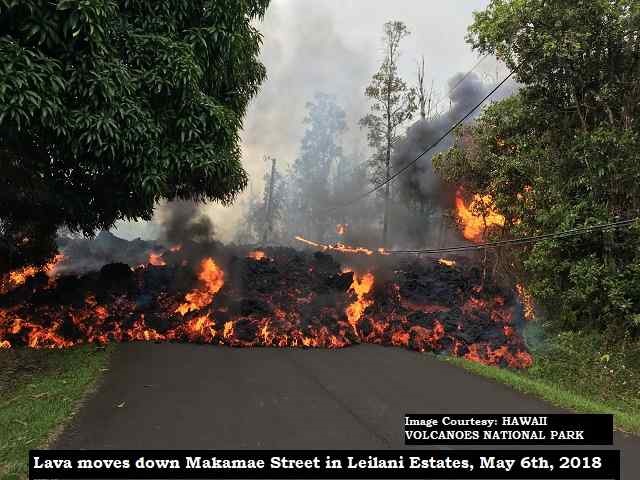Kīlauea volcano, one of the most active volcanos on the Earth erupted on Hawaii's Big Island on September 30, 2021. The volcano has reportedly erupted within the Hawaii Volcanoes National Park and there is no threat to homes.
Happening now: a new eruption of Kīlauea inside Halemaʻumaʻu!
— Hawaii Volcanoes NPS (@Volcanoes_NPS) September 30, 2021
See live webcams inside Halemaʻumaʻu, courtesy of USGS Hawaiian Volcano Observatory: https://t.co/Yf1Kc3RQ7J
Photo courtesy of USGS pic.twitter.com/BUKfCCmI5J
The webcam footage of the crater showed lava fountains covering the crater's base and clouds of volcanic gas rising into the air. The same area of the volcano also erupted in December 2020, which lasted until May 2021.
News release: Safety is key to viewing the new eruption at Kīlauea volcanohttps://t.co/Gb5IDeQTjn
— Hawaii Volcanoes NPS (@Volcanoes_NPS) September 30, 2021
USGS Webcam image #RecreateResponsibly pic.twitter.com/Ak9l0Fsfuc
US Geological Survey officials also confirmed that an eruption has begun in Kilauea's Halemaumau crater at the volcano's summit. The officials confirmed that the eruption is not in an area with homes. It is currently taking place entirely within the closed area of the Hawaii Volcanoes National Park.
Hawaii Red Cross stated in a social media post, "There is currently NO THREAT to any homes or populated areas of the Big Island. We will continue to monitor the event and update as needed."
Kilauea volcano is erupting in Halema'uma'u crater. There is currently NO THREAT to any homes or populated areas of the Big Island. We will continue to monitor the event and update as needed. pic.twitter.com/evFylKoig3
— HawaiiRedCross (@HawaiiRedCross) September 30, 2021
Earlier, officials had reported increased earthquake activity and ground swelling in the area and had raised the alert levels accordingly.
Kīlauea volcano eruption 2018
The Kīlauea volcano's eruption in 2018 was the largest in centuries and its coincided with a massive summit collapse. The volcanic eruption destroyed hundreds of homes and displaced thousands of residents. Prior to this, the volcano had been slowly erupting for more than 30 years since 1983.
The eruption changed the island of Hawai‘i forever and lasted for about 3 months. Large lava flows covered land southeast of the Hawaii Volcanoes National Park devastating residential areas in the Puna District. The lava fountains and rivers were preceded by a series of earthquakes. 
The massive lava flow reached the Pacific Ocean at Kapoho Bay on June 4. The lava also entered the Kapoho Crater and evaporated Green Lake, which was the largest natural freshwater lake in Hawaiʻi.
By August, around 35 km2 of land had been covered by lava flows and about 875 acres of new land had been created in the ocean. The red hot molten rock reduced several landmarks and neighbourhoods to a vast field of blackened boulders. The eruption finally subsided in August and was declared to have ended in December.
The 2018 volcanic activity was the most destructive in the United States since the eruption of Mount St. Helens in 1980.
Comments
All Comments (0)
Join the conversation